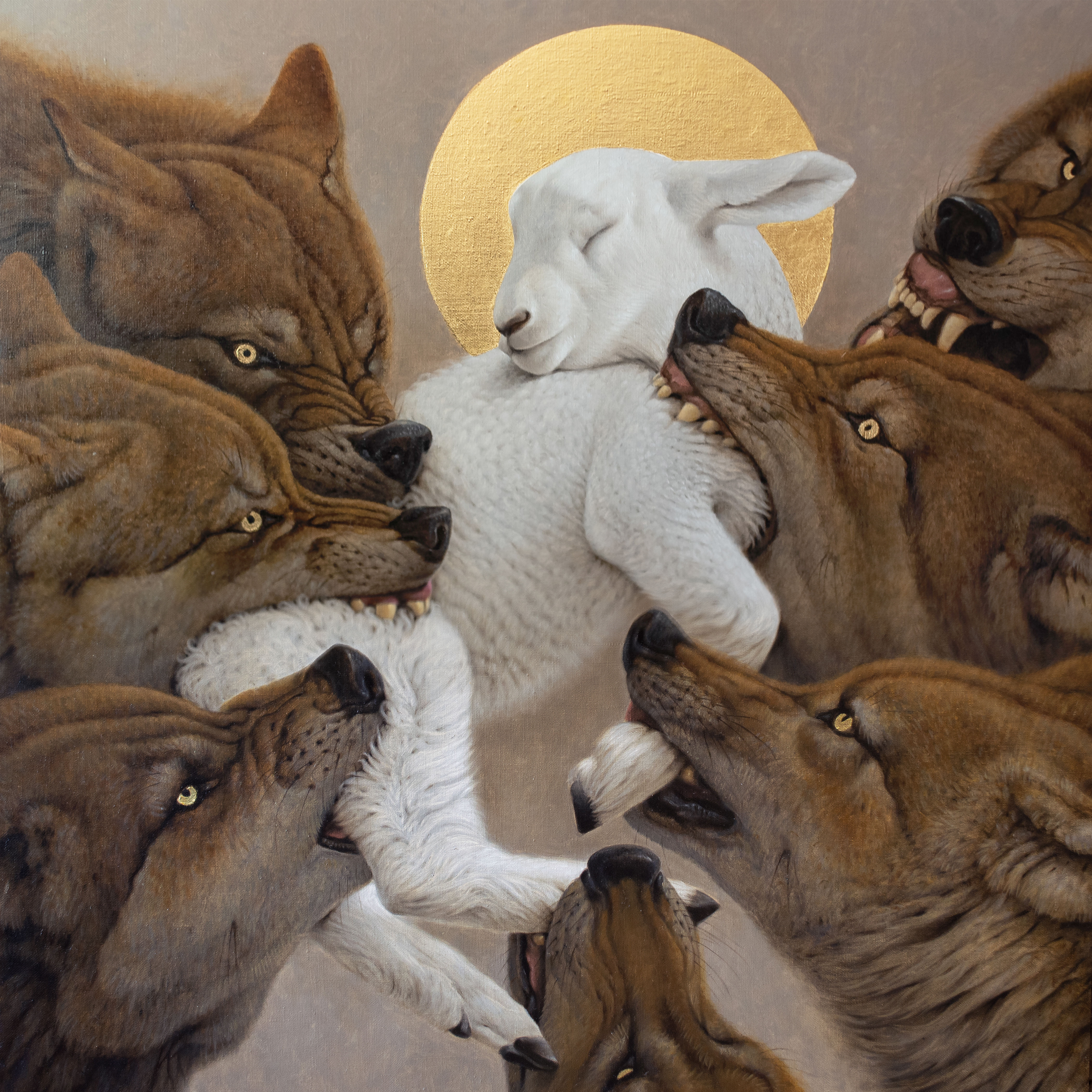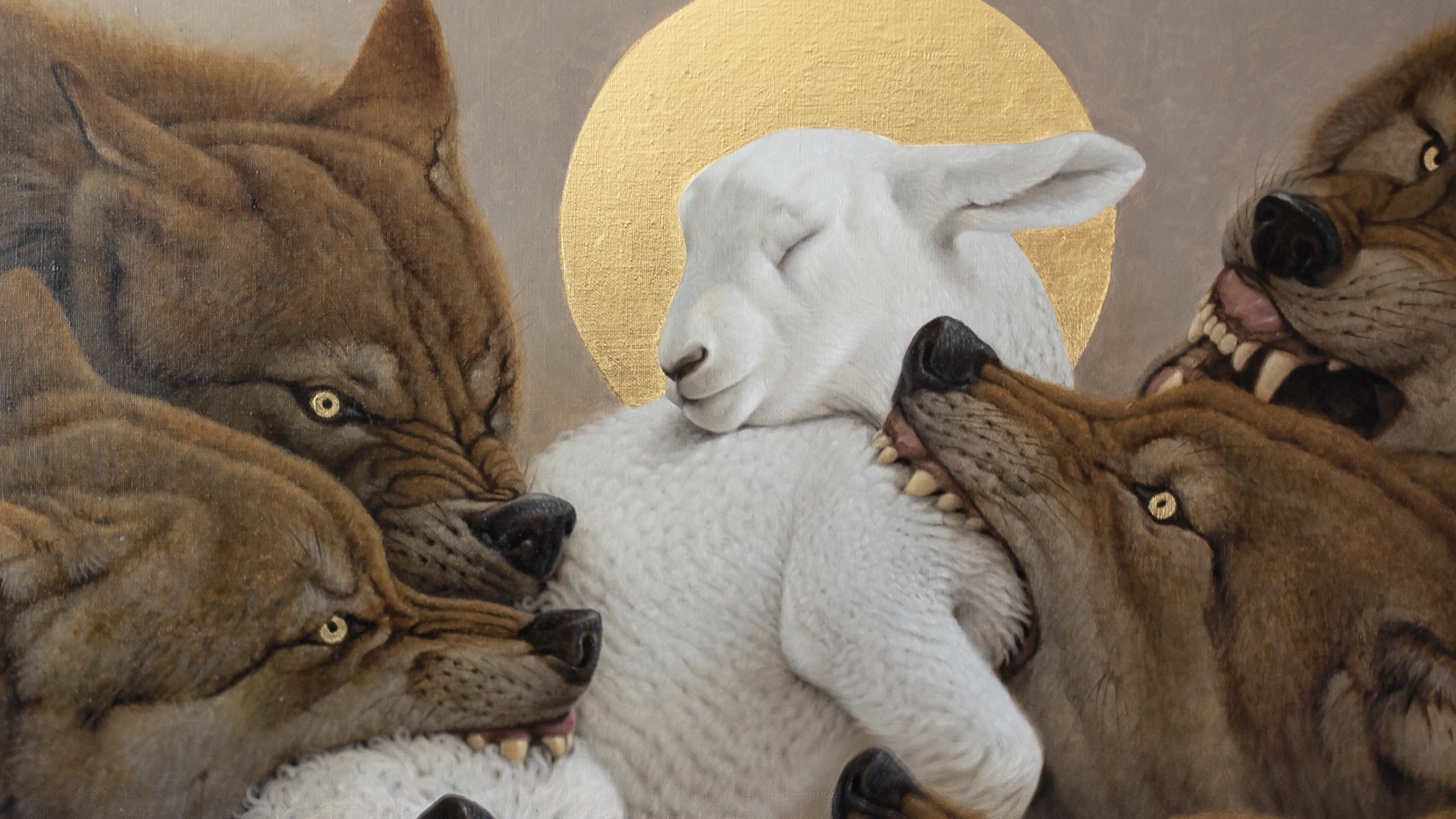He was oppressed, and he was afflicted,
yet he did not open his mouth;
like a lamb that is led to the slaughter,
and like a sheep that before its shearers is silent,
so he did not open his mouth.By a perversion of justice he was taken away.
Who could have imagined his future?
For he was cut off from the land of the living,
stricken for the transgression of my people.—Isaiah 53:7-8
There is a story about a mother of a young boy named Laurence who wrote to C.S. Lewis after her son finished reading The Lion, the Witch, and the Wardrobe. Her son was concerned that he, upon realizing that Aslan was Christ, actually loved Aslan more than Jesus. C.S. Lewis responded to the mother,
Laurence can’t really love Aslan more than Jesus, even if he feels that’s what he is doing. For the things he loves Aslan for doing or saying are simply the things Jesus really did and said. So that when Laurence thinks he is loving Aslan, he is really loving Jesus: and perhaps loving Him more than he ever did before.
C.S. Lewis, like Jesus, was a master of analogy. The slow journey of Aslan to the stone table, Lucy and Susan at his side running their hands through his soft mane, at once deeply in love with the lion and appropriately fearful and respectful of him as lion, provides a palpable framework for pondering the person of Christ—his humanity, his divinity, and his real and corporal sacrifice for us. As Aslan, he is cast in a new light, with new terms, with the face of a powerful, fierce, and yet deeply lovable lion.
His self-emptying love increases the divine life within us . . .
The figure of Aslan, in a mysterious way, makes real the person of Christ whom we have allowed to become bland and tame—domesticated by our blasé consideration of the Lord of the Universe. We hear his voice, but become distracted when it is proclaimed in monotone from the pulpit. We see him hanging from a cross of precious metal around a friend’s neck but to seasoned eyes it has become oddly predictable. We encounter his perfectly blushed cheeks and saccharine blue eyes on a prayer card, without grasping the depths of Almighty God. Inadvertently, all of these interactions keep the personal Christ at a distance. Even our reception of the Eucharist—the true Body and Blood of our God and Savior that we consume—is increasingly casual and mundane. Our familiarity tames Christ, and our souls beg for those shimmering moments of connection that Laurence had in his first encounter with Aslan.
Konstantin Korobov’s Agnus provides one such encounter. The painting depicts the sacrifice of the Lamb of God, the suffering servant who was led to the slaughter and yet “opened not his mouth.” The innocence and purity of Christ is depicted in the gentle lamb’s soft, white wool, and in his serene face, with eyes softly closed as ravenous wolves take their first bite, ready to tear him limb from limb. The serenity of the lamb is contrasted by the frenzy of the wolves, their lips curled in vicious growls, their ears pinned as all seven canines attack their small, submissive prey. They surround him on all sides, and their aggression lifts him up; he is to become their undeserved food. Agnus depicts the moment before the sacrifice is fulfilled, the wolves’ sharp teeth not yet drawing the blood that will be dripping down the lamb’s white wool in seconds.

While our hearts may have become accustomed to seeing the nails in Jesus’ sinless hands and feet and his body hanging on the cross, it is difficult to remain numb in one’s encounter with Agnus. Like Aslan’s impact on Laurence, this painted analogy of the sacrifice of Christ makes palpable once more the nature of the suffering of Jesus at the hands of his ravenous, scapegoating, violent attackers—his innocent blood offered without a struggle, freely offering his own body and blood as food to those taking it by force. The temptation for the viewer is to look upon the wolves with detached disgust, to cry for the lamb and recoil with horror as the event unfolds. And yet, Korobov’s analogical depiction of the Paschal sacrifice contains a further detail for the viewer’s spiritual contemplation: the golden splendor of the metallic gold halo surrounding the head of the lamb is reflected in the eyes of the wolves.
What could that mean?
The wolves, we sinners who killed the incarnate Lord, see God despite our constant and often violent rejection of him. His divine life is reflected in our eyes, and our violent repudiation of his divinity, our “control” of his humanity, doesn’t remove the spark of his divinity from our own hearts. He has created us, wretched and violent scapegoating sinners that we choose to be, with his very life within us. And in an ironic twist, our very rejection of him—our teeth in his soft, white wool—is the catalyst for his sacramental gift to us: the free offering of his Body and Blood, not to spite us, but in spite of us. His self-emptying love increases the divine life within us, and our eyes glow magnificently as we consume him, the Lamb. The irony is meant to convert us. As we encounter the one true love, our lips that were once snarled in vicious rage and intent on destruction are moved to whisper prayers of contrition and thanksgiving. And as our sin is turned on its head, it is destroyed. We have no other choice but to submit to that love, and as we do, that brilliant, golden glow increases in our eyes and in our hearts. The source of our life becomes the summit. The Lamb of God, his limbs still caught in the mouths of wolves, is held high for the salvation of the world, and we fall down to worship.
Agnus Dei, qui tollis peccata mundi, miserere nobis.
This piece first appeared in Issue XIII: The Eucharist of the Evangelization & Culture Journal of the Word on Fire Institute.
